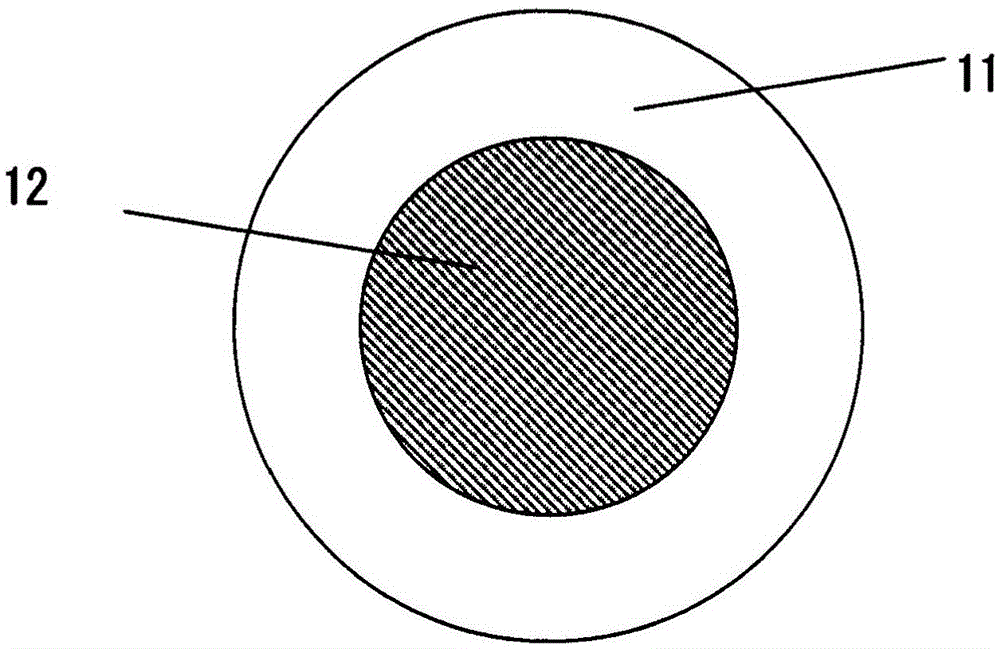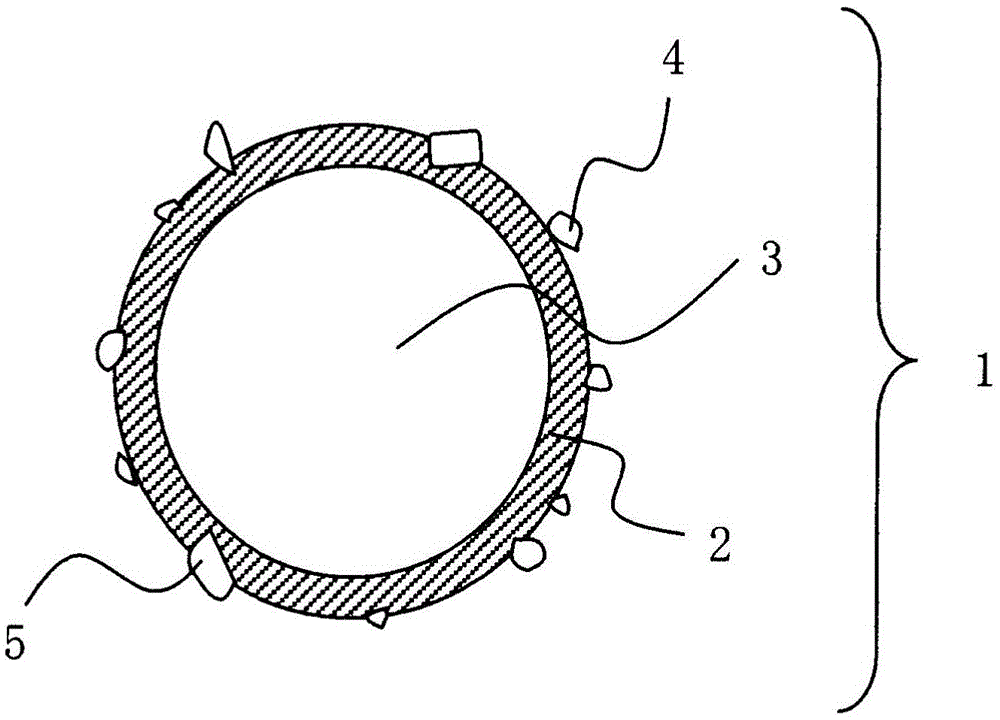Method for producing thermally expandable microspheres
A technology of heat-expandable microspheres and a manufacturing method, which can be used in the preparation of microspheres, microcapsule preparations, coatings, etc., can solve problems such as insufficient sufficiency, and achieve the effects of high solvent resistance and excellent stability over time
- Summary
- Abstract
- Description
- Claims
- Application Information
AI Technical Summary
Problems solved by technology
Method used
Image
Examples
Embodiment 1
[0175] [Example 1; Thermally expandable microspheres]
[0176] To 600 g of ion-exchanged water, 150 g of sodium chloride, 70 g of colloidal silicon dioxide having an active ingredient of silicon dioxide of 20% by weight, 1.0 g of polyvinylpyrrolidone, and 0.5 g of tetrasodium ethylenediaminetetraacetic acid were added. The pH of the mixture was adjusted to 2.8 to 3.2 to prepare an aqueous dispersion medium.
[0177] In addition, 65 g of acrylonitrile, 30 g of methacrylonitrile, 5 g of methyl methacrylate, 0.3 g of trimethylolpropane trimethacrylate, 20 g of isopentane, and 1,1 - Di(tert-hexylperoxy)cyclohexane containing liquid 2.4g (active ingredient amount 2.0g) was mixed to prepare an oily mixture.
[0178] The aqueous dispersion medium and the oily mixture were mixed, and the obtained mixed solution was dispersed with a homomixer (manufactured by Primix Corporation) to prepare a suspension. This suspension was transferred to a pressurized reactor with a capacity ...
Embodiment 2~5 and comparative example 1~2
[0180] Except for changing the various components constituting the oily mixture used in Example 1, their amounts, and the polymerization temperature to those shown in Table 1, heat-expandable microspheres B to E were obtained in the same manner. Then, the solvent resistance and the residual monomer ratio were evaluated, and are shown in Table 1.
[0181] Furthermore, in Example 5, first, polymerization was carried out at 60°C for 10 hours (first stage), then the temperature was raised to 80°C in 30 minutes (second stage), and finally, polymerization was carried out at 80°C for 5 hours (third stage). ), under such reaction conditions, thermally expandable microspheres E are obtained.
[0182] [Table 1]
[0183]
[0184] *1 The first stage: 60°C x 10 hours, the second stage: heating from 60°C to 80°C in 30 minutes, the third stage: 80°C x 5 hours
[0185] In Table 1, monomer components, initiators, and crosslinking agents are represented by the following abbrev...
Embodiment A1
[0195] [Embodiment A1; Polyurethane coating film]
[0196] With the heat-expandable microsphere B of 10g and the polyurethane binder of 90g (polyurethane solid content 21%, mixed organic solvent 79%, the weight ratio of mixed organic solvent is methyl ethyl ketone / toluene / acetone / N, N-dimethylformamide =40 / 20 / 10 / 30) were mixed to prepare a polyurethane coating composition.
[0197] This polyurethane coating composition was coated on the base fabric with a coater so that the thickness of the coating film after drying would be 0.3 mm. Then, when the coating film thickness (T2) after drying at room temperature was measured with the film thickness meter, it was 0.3 mm. Then, it heat-processed for 2 minutes using the gear type oven previously heated to 180 degreeC, and obtained the polyurethane coating film which expanded.
[0198] When the thickness (T1) of this expanded polyurethane coating film was measured in the same manner as above, it was 1.8 mm. The expansion rat...
PUM
| Property | Measurement | Unit |
|---|---|---|
| density | aaaaa | aaaaa |
| density | aaaaa | aaaaa |
| density | aaaaa | aaaaa |
Abstract
Description
Claims
Application Information
 Login to View More
Login to View More - R&D
- Intellectual Property
- Life Sciences
- Materials
- Tech Scout
- Unparalleled Data Quality
- Higher Quality Content
- 60% Fewer Hallucinations
Browse by: Latest US Patents, China's latest patents, Technical Efficacy Thesaurus, Application Domain, Technology Topic, Popular Technical Reports.
© 2025 PatSnap. All rights reserved.Legal|Privacy policy|Modern Slavery Act Transparency Statement|Sitemap|About US| Contact US: help@patsnap.com



